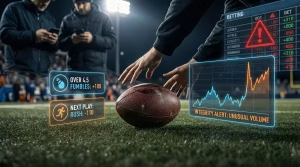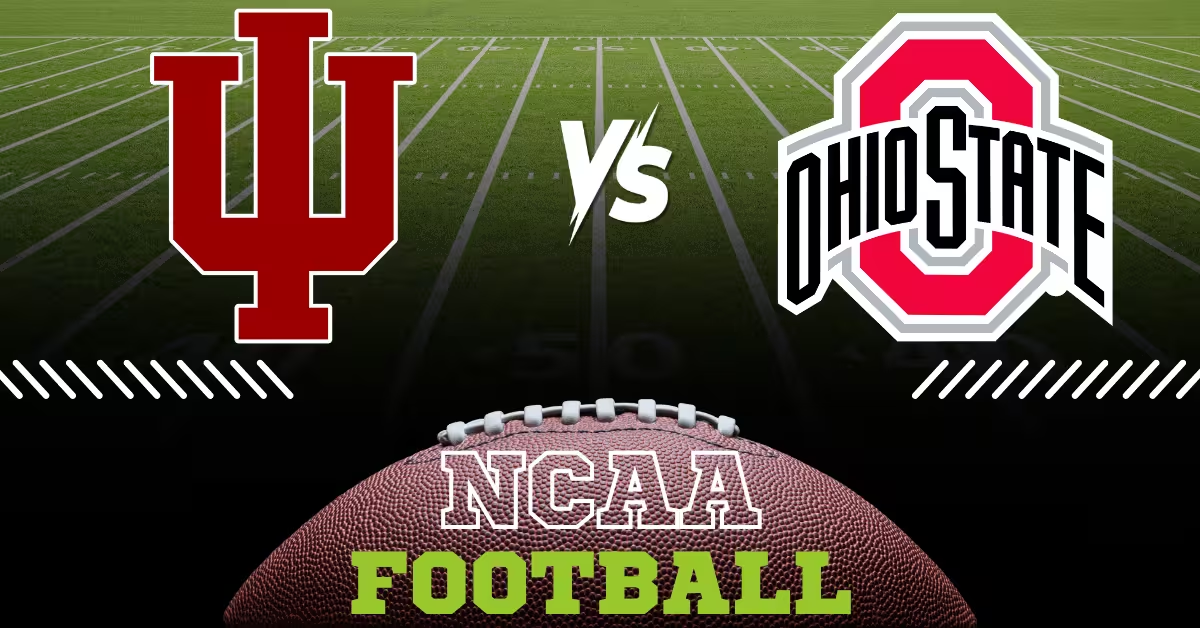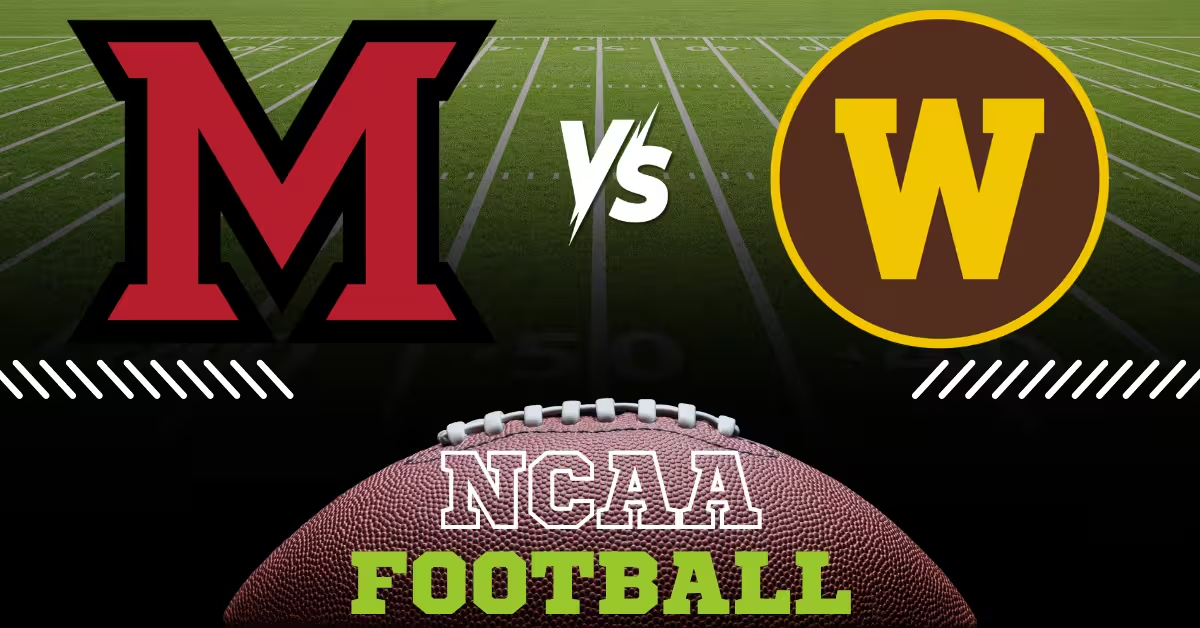Impact of 2025 NFL Rule Changes on Betting Lines and Player Props
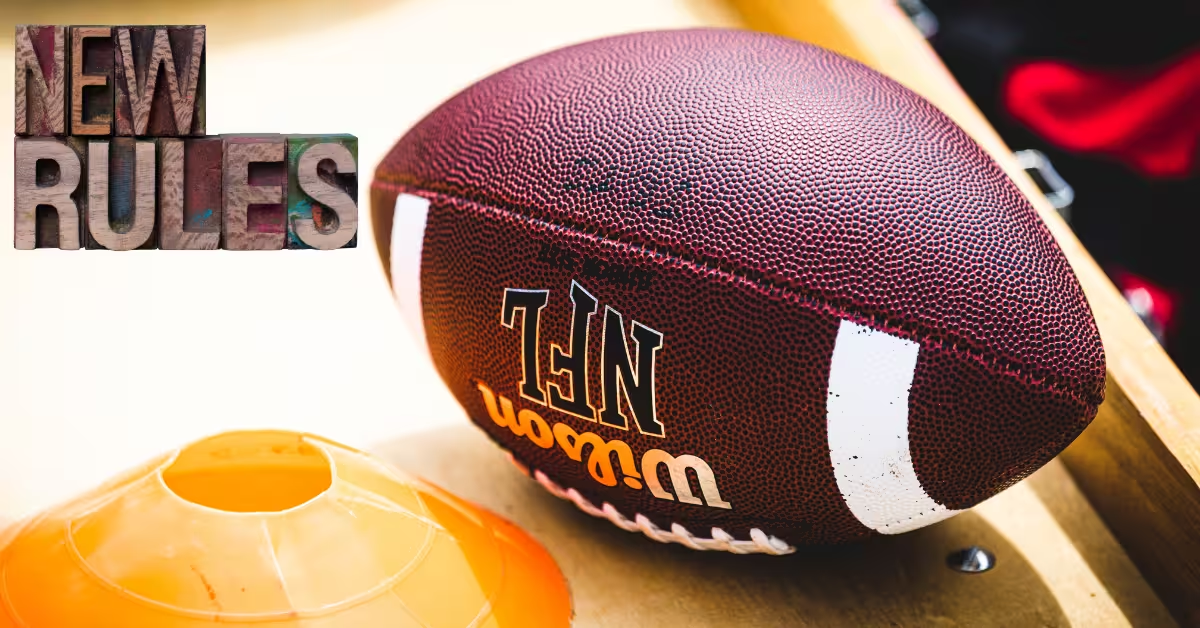
Listen up, all of you slavishly devoted pigskin punters! There is a new kickoff rule coming down the pike that could affect your betting strategy.
The 2025 NFL season comes with two new rules. One of them is a revamped kickoff format, and the other? Brand new replay/challenge protocols.
Yes, these are safety measures for players, but they’ll also change up field positions and the game’s pace in every quarter. And you better believe that these rule changes will mean point totals, prop lines, and live odds could change in surprising ways.
But don’t panic! We are going to go over all of it, including how the new kickoff rules and replay changes work, and then apply that knowledge to how you should alter your over/under wagers, special-teams props, and in-play strategies. Let’s blitz this, baby!
Quick Overview of the 2025 Rule Updates
The NFL’s 2025 rulebook is recasting the opening play of each half and the referee challenge system. Under the new Dynamic Kickoff rules, kickoffs now line up like a mini-scrimmage (with players smooshed closer together and limited pre-snap movement).
Any kickoff that lands in the end zone? It will now be ruled a touchback at the 35-yard line (it was previously the 25). This change is aimed at forcing more returns and better field position. The teams that are behind can also declare an onside kick at any point in the game (not only in the 4th quarter), although they still have to be trailing to do so.
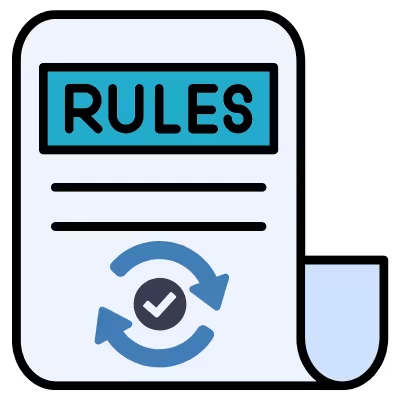
The Replay Assist program is getting stronger. On-site replay officials are now able to proactively fix certain penalties (defenseless hits, face-mask grabs, horse-collar tackles, tripping, and running-into-the-kicker).
Coaches retain red flags to challenge plays, but only if a flag was thrown on the field in the first place; they can’t challenge to draw attention to an uncalled foul. The league is locking down some fouls under replay review while discouraging needless coaches’ challenges. The rule adjustments are meant to help with game flow and decrease injury risks.
New Kickoff Rule
How does the new kickoff rule operate? Look below:
- Touchbacks at the 35: Starting in 2025, any kickoff that’s caught or downed in the end zone will be spotted at the 35-yard line, not the 25. A five-yard jump forces teams to think twice about easy touchbacks.
- Compact Alignment: The ball is kicked from midfield toward a “setup zone,” which is where return teams can have at most three players just ahead of the restraining line. By lining up like a regular play and restricting space/speed, the NFL expects more return attempts (and way less high-speed collisions).
- Onside Any Time (If Trailing): Any team that is trailing can declare an onside kick on any kickoff. This gives teams a weapon earlier in the game. The kicker still has to bounce the ball short (it will be kicked from the 34 instead of the 30-yard line per reports) to attempt a recovery.
Coach‑challenge Change
And what’s with the whole coach challenge thing? Here’s how that will work:
- New limits: The 2025 rulebook narrows the scope of how and when coaches can use the red flag. Teams are now limited to just one challenge per half, regardless of if it’s successful or not. A failed challenge still costs a timeout, but the biggest change? Coaches can only challenge plays where a penalty was already called on the field. They can’t use challenges to argue for missed calls or demand new flags after the fact.
NFL Executive VP of Football Operations Troy Vincent explained the change like this: “We’re trying to remove unnecessary delays while still allowing replay to correct egregious errors. If no flag was thrown, that’s the call; the replay booth won’t be used to manufacture one.”
So, if a pass interference or personal foul isn’t flagged live, coaches have zero recourse. That erases the gray area and cuts down on throwaway challenges, as it forces coaching staffs to be way more selective with their one shot per half.
The Replay Assist Program
The instant replay involvement is being expanded for safety calls as well, and it looks like this:
Replay Assist: The league’s system for booth-initiated reviews now has broader authority over safety-related fouls. Replay officials can step in to correct face masks, horse-collar tackles, defenseless receiver hits, tripping, and roughing the kicker, even if the on-field refs happen to miss them.
NFL Referee Committee Chair Perry Fewell told ESPN: “We’ve given replay assist a bit more authority when it comes to player safety. But that’s a booth-driven correction, not something coaches can trigger. The goal is faster, cleaner outcomes, not dragging the game down.”
The adjustment means there will be fewer interruptions from sideline challenges and more consistent pacing, particularly in moments where late-game rhythm used to be interrupted by questionable red flags. What does this mean for bettors? A smoother clock flow in halves with no replay-worthy safety fouls!
Kickoff Rule — Betting Impact Breakdown
The new kickoff rules will undoubtedly reverberate through point spreads, totals, and props. In 2024’s test run, the changes led to a historic scoring bump: the league averaged 45.8 points per game, up from 43.5 in 2023. Returns also jumped; NFL data projects a 65–75% return rate once touchbacks are at the 35. In betting terms, more returns generally mean more possessions and better starting field position! Below are the effects it will have on betting.
Over/Under Point Totals
The change in kickoff structure isn’t just a cosmetic thing; it cuts into the number of splash plays that used to sneak totals over the number. In past years, a surprise return or botched coverage could flip a slow first quarter into a 14-point swing. That volatility has been evened out. The new alignment keeps coverage teams close to the returner and limits high-speed collisions, which means most returns start around the 25–30 yard line without a lot of drama. So, while returns will be more frequent, they’ll be way less explosive.
And that creates a strange betting paradox. You’d think more returns would mean more points, and they did in theory during the 2024 test run. The league saw a modest uptick in average points per game (from 43.5 in 2023 to 45.8 in 2024), and part of that was tied to better starting field position. But it wasn’t because of long touchdown returns; it was because offenses got the ball at the 30+ instead of the 25.
Early game totals, in particular, are worth watching. First quarter and first-half over/unders usually lean conservative because coaches start out cautiously. But when a team starts a drive near the 35 instead of the 25, and doesn’t burn 30 seconds letting the kickoff bounce into the end zone? The chance of getting a field goal out of that first possession goes up. That’s where the early scoring lines can drift upward.
If you want to compare the pre- and post-rule totals, below is how it looked across sample games:
| Year | Average Starting Field Position (After Kickoff) | League-Wide PPG | Common Totals Range | |
|---|---|---|---|---|
2023 | Own 25.3-yard line | 43.5 | 42.5–44.5 | |
2024 | Own 30.1-yard line | 45.8 | 44.5–46.5 | |
2025 (Projected) | Own 33–35-yard line (due to spot on touchbacks) | ~46–47 (early projection) | 45.5–47.5 |
The expected outcome isn’t that games are all of a sudden shootouts; it’s that the bar is raised. With better field position and fewer time-draining touchbacks, the average drive becomes more productive. That can push totals upward without changing the look or feel of the game. If sportsbooks hang totals at 43.5–44.0 in the first couple of weeks, you could be looking at value on the over when two average offenses face off and field position tips them over the edge.
Player Props
Kick return props will also have a reset. In past seasons, most sportsbooks priced “longest kickoff return” or “total kick return yards” based on volatility alone; all it took was one busted lane for someone to run 60+ yards. But with the new kickoff setup? That kind of play is going to be the exception, not the rule. Returns are happening more often, but the average yardage per return is coming down. That changed how you should approach prop betting around kickoff plays.
In 2024’s trial run of the new kickoff formation, teams returned kicks on about 78% of opportunities, up from just 38% from 2023. That’s a massive increase in volume. But the average return distance hovered around 22–24 yards, compared to 26–27 in the prior format. The compressed setup, with both coverage and blocking players aligned five yards apart at the 40 and 35, makes it harder to find big seams. You get short, frequent returns. Not breakaway plays.
So what does that mean for props? For starters, “Longest Kick Return Over 35.5 Yards,” which was a common line in 2023 and 2024, will feel inflated in most matchups. That under is live unless you’re dealing with a known burner or a soft special teams unit. Sportsbooks that haven’t adjusted will get caught pricing those lines on outdated assumptions.
Where it gets really interesting is with volume props. If you’re seeing “Total Kick Returns Over 3.5” per team or “Kick Return Yards Over/Under 85.5” as an individual prop, you have some nice opportunities. Because touchbacks now give up the 35-yard line, most kickers are avoiding booming it through the end zone. That means returners are fielding the ball inside the 5 or on a short hop and taking it out. More returns equal more yardage, even if the yards-per-return stay modest. Those props are more stable and easier to handicap than they used to be.
If you’re targeting props in this new landscape, fade the splash plays and bet into the volume. Go under on the longest return. Go over the number of returns. And if a book hangs a lazy prop like “Player X Over 110.5 return yards,” know that it now takes 5+ returns to get there; it’s not one big one and done.
Live Betting Opportunities
And what about live betting? This is where the sharp bettors should be paying really close attention. The new kickoff format not only affects special teams stats; it changes the pace and tone of games in the first and fourth quarters. That’s where live betting windows used to be unpredictable; a surprise TD return, a flagged touchback, or an unexpected squib could swing lines all over the place. That kind of chaos has calmed down under the new rules.

Returns are more controlled, more repeatable, and more average. And that’s an absolute gift for live bettors. If you know that every drive is starting between the 28 and 35-yard line, and you’re not worried about a 103-yard score coming out of nowhere, it’s so much easier to time your entries.
In 2024, the average drive following a kickoff lasted 5.7 plays and covered about 32 yards, compared to just 4.8 plays and 27 yards the year before. That small change opened up live total overs in second quarters where scoring pace had dipped; the drive math made it more likely that a basic possession could generate a field goal or flip field position.
What this also means is that live lines adjust more slowly. In the first quarter, if the opening drives don’t feature big returns or turnovers, totals may drop a few points from the pregame number. That can be the moment to strike: the field position edge hasn’t gone away, but the market is reacting like it has.
Same goes for end-of-half sequences! Without kickoff penalties or touchbacks eating up time, teams are getting cleaner setups for their two-minute drills. That favors late-half overs and “next score” props when the market isn’t priced aggressively.
And don’t forget the onside scenarios. Under the 2025 rules, teams can declare an onside kick at any point in the game, as long as they’re behind. That introduces a brand new wrinkle into second- and third-quarter live betting. If a team is down 10 and just scored, you have to consider the real chance that they’ll try to steal a possession. Live ML odds might not price that possibility in until it’s too late. If you’re paying attention, you can beat the sportsbook to the number!
Challenge Rule — Betting Consequences
The new challenge restrictions change how the game is paced, and not just when the clock runs, but when it doesn’t stop. Coaches get one challenge per half. That’s it. They can’t challenge missed penalties. The replay booth can step in, but only for player safety fouls. That removes several of the most common delays that used to slow down second quarters, kill late-half drives, or give teams time to reset. And with fewer stoppages, the pace picks up, and that will change totals and in-game betting windows!
Over/Under Point Totals
Games now run with fewer breaks, and that’s good news for everyone who thinks that football games are way too long. There are more reviews of missed DPI. No more stall-outs after a third-down spot.
That means uninterrupted possessions, fewer wasted plays, and a decrease in clock drain without movement.
Totals in the 43–46 range are now vulnerable to getting passed, and not from breakaway scoring, but from time no longer being eaten up by delays. Fewer stoppages = more usable seconds = a few more plays. If a drive gets two extra snaps because the clock wasn’t frozen for a sideline flag, that’s usually enough to get into field goal range. Sportsbooks might raise numbers in high-total games, but mid-tier matchups are where these changes will be seen the most.
Live Lines & In‑Game Derivatives
Stoppages used to control a game’s momentum, but not anymore! Coaches would use challenges to break a drive’s rhythm, kill the tempo after a turnover, or burn time for a late-half clock reset. Those tools? Bye! That changes how live totals and in-play props behave.
You should be watching the following four windows:
- Third-down reviews; no more delays after spot challenges.
- End-of-half fouls; less clock manipulation via flag disputes.
- Turnover returns; the momentum won’t be stalled out by post-play reviews.
- Final drives; challenges won’t be there to bail out tired defenses.
Fewer pauses mean that live lines move faster, and there will be reduced corrections. If a team picks up tempo, there’s no timeout or challenge to slow it down, and the sportsbook won’t have time to adjust it mid-drive. Time-based props (“plays in Q2,” “next team to score”) become more reliable. You’re betting into pace, not volatility.
Combined Effects — Line Movement & Player Props
The kickoff and replay rule changes don’t only affect isolated markets; they will reshape how totals and props are built across entire slates. Fewer return touchdowns. Fewer stoppages. Drives that start closer to midfield, and way less timeouts wasted on questionable flags. Add all that together, and you get a different game, and it’s one that sportsbooks now have to account for in pregame lines and prop combos.
For totals, this creates a compression effect. Games with passive special teams and low-tempo offenses might see their over/unders drop by two to three points compared to 2024, particularly if neither team has a return specialist that’s worth watching. But in matchups where both teams are likely to return kicks and burn through clean drives without delay? You’ll see totals hold or even go up, and not because of scoring, but because the clock isn’t being stopped as much.
Props are being grouped differently as a result, too. You’ll see pairings that never used to exist, like return stats linked with officiating trends. Football betting sites are now experimenting with lines like the ones below:
- “Total Kick Return Yards + First-Half Challenges: Over/Under 88.5”
- “More: Kickoff Returns or Accepted Penalties?”
- “First Special Teams Play to Exceed 25 Yards OR First Booth Review?”
The above markets show the fact that kickoff returns are now predictable in frequency but less volatile in yardage, and reviews will happen less but will still be tied to fixed foul types.
This is how a typical adjustment could look with different matchup profiles:
| Game Type | 2024 Total | 2025 Projection | Reason for Adjustment |
|---|---|---|---|
Low-possession, soft coverage units | 42.0 | 39.9 | No big-play returners, reduced stoppages |
Balanced teams, average return rates | 44.5 | 45.5 | Extra plays added by uninterrupted drives |
Return-heavy matchup, limited flags | 46.5 | 48.5 | Frequent field-position flips, minimal reviews |
If you’re betting on pregame totals or combo props, the chasm between how sportsbooks modeled these games in 2024 and how they unfold in 2025 is where the value lives. Pay attention to which teams keep the red flag in their back pocket and which ones let kickoffs come out of the end zone; those are the games where betting lines haven’t totally caught up to what’s happening on the field!
Four Betting Strategy Tips
Want some tips for betting in this new age of the NFL? We got you!

Target Mispriced Totals in Low-Event Matchups
Early-season lines will probably still reflect last year’s return data and stoppage trends. That’s a problem, and a great opportunity. If you see two teams with limited return value, low pass volume, and coaches who rarely use challenges? Totals in the low 40s could be inflated. The games will now play quicker and produce fewer bonus possessions. Unders in the 39.5–41.5 range are in play when the matchup leans static and the new rules decrease the variance.
Take Unders on Longest Kickoff Return Props
Kickoffs are coming out of the end zone way more often, but they’re not going as far. With the condensed formation, coverage units close the gap almost instantly, and that makes long return props weaker across the board. Unless a team has a proven return threat facing a below-average special teams unit, you’re better off taking the under. It’s no longer just about if the return happens; it’s about how quickly it’s over!
Bet Overs on Return Volume Props
The number of returns is the one category that’s now much easier to project. Most kicks are coming back, and there’s less variation across teams. That makes “Returns Over/Under” props far more predictable than they were in previous NFL seasons. Four to six returns per team is a realistic baseline in any close game. In higher-scoring matchups or indoor games with shorter kicks, that number goes up. The props will reward volume, not risk.
Look for Live Opportunities When Drives Stay Uninterrupted
Without challenges breaking up momentum or officials pausing play every few series, there are longer periods where teams are moving without interference. Live totals and drive-based props during these periods are easier to time. If a team’s offense is clicking and the sportsbook hasn’t bumped the line yet? You’re buying in before the next play hits the market. The sequences don’t last very long, but when you spot one, the pricing advantage is real.
FAQs
Bet you have a lot of questions about these rule changes (do you see what we did there?). We put together a few of the most common FAQs that should cover the most important things about how they’ll impact betting lines and player props!
Will These Rule Changes Apply in Playoff Games as Well?
Yup! They were all approved and will apply to both the regular season and postseason. The only differences might come from specific playoff procedures (the overtime change actually matches regular-season OT with what was used in the 2024 playoffs). For betting, this means that playoff totals and prop bets will be influenced by the same kickoff and challenge dynamics as regular games. So don’t expect a separate “playoff kickoff” rule; the changes are league-wide.
Should I Still Bet on Kickoff Return Props?
Of course, you should, but you need to adjust your expectations. Kickoff return props (like longest return, total return yards) can still be wagered, but just know that almost every game will have multiple returns now. It won’t be a rarity to see 4–5 returns per game. If a sportsbook is slow to adapt, the under on “longest return” will probably be safer (given coverages will be better with all hands near the line). Someone who’s regularly returning kicks can rack up yards, so high-value returners are def worth watching. Lean on teams’ special-teams strengths and the new frequency of returns if and when you choose these props.
Are There Any Teams That Stand to Benefit More from These Changes?
Yep! These will be those with top-tier returners or great special teams units; they’ll get an edge. On defense, teams that were already excellent in kickoff coverage might have a slight disadvantage since opponents won’t settle for safe touchbacks. And disciplined teams will benefit from the replay assist; if they draw a flag, they know it will be scrutinized. Pay attention to how each roster is built: a team that prioritizes special-teams coaching could see a bigger shift than a team that doesn’t prioritize returns.
How Does the Onside-Kick Change Affect Late-Game Betting?
Allowing onside kicks anytime a team is behind gives trailing teams more gamble options. In practice, this could turn into surprise onside attempts in the 2nd or 3rd quarter if a coach wants to change the momentum. This adds volatility in late-game situations for bettors: a trailing team might try an onside when the game plan didn’t previously suggest it. Oddsmakers now have to weigh the increased chance of a kickoff surprise whenever a team is down. In live betting, watch for changes when an underdog is within three scores; bookmakers could adjust spreads more aggressively if an onside is declared. The main thing is that any time a team is behind by a big margin, the possible exclamation-point play exists to shake up the lines.
How Quickly Should Sportsbooks Adjust Their Lines?
It will take a few games for the sportsbooks to calibrate. They are usually super cautious with big shifts, so early-season lines might lag behind the actual stats. If Week 1 games see unexpectedly high (or low) scoring due to the new rules, smart bettors should act on the first look. After a couple of weeks, expect lines to shift; totals might climb, and prop lines on returns may move. Sharp bettors find value in the initial lag. Keep records of Week 1–3 trends; if you see regular underrating of scoring or return stats, bet accordingly before the market “catches up.” Watch movers like totals and returns props, as early market inefficiencies are likely.
What about Overtime and Other Rule Changes?
While our focus is kickoffs and challenges, owners also approved regular-season OT equality (both teams get the ball once) for 2025. That change mostly affects overtime strategy and scoring chance (making OT more fair), and that can influence late-season wager outcomes (like “total points with OT” props). But it doesn’t directly change kickoff or challenge rules. It means OT coin flips have less drastic impact on the final score, and that could slightly inflate expected point totals if games do get into OT. For special-teams betting, the big items are still the kickoffs and replay rules that we covered.
Will These New Rules Be in Effect for Preseason Games?
Yes! All officially adopted rules apply beginning with the 2025 preseason. NFL training camps and preseason games will be the first live look at the changes. Coaches and players will have to adapt from the first kickoff of summer football. If you’re looking to test out theories, the preseason is where these rules are already being used. By Week 1 of the regular season, both teams and oddsmakers should be familiar with how they play out.
Adapting Your Strategy for 2025 NFL Lines
The rules have literally changed, and the market hasn’t caught up to all of it. Some totals are still padded by last year’s assumptions. Props are being posted without accounting for how return volume or reduced stoppages recalculate the drive structure. If you’re betting 2025 lines like it’s still 2024? You’ll be left in the dust. Below, we tell you how to fix that!
Pay really close attention to opening game totals early on in the season. If sportsbooks don’t fully account for the extra plays from kickoffs and faster clock, early totals might be set too low. If actual scoring begins to track 2024’s high pace (45+ PPG), those lines will look super generous. Be ready to grab overs in games that seem underpriced given the new kickoff math. Conversely, if you notice kickoff coverage teams absolutely dominating returns, a cautious under could make the most sense. Don’t assume lines are “right” yet; they’ll likely change as new data comes in.
Return-related props will also have some new norms. Because returns are virtually guaranteed with every kick, some lines should drop. “Longest kickoff return” props could land shorter, favoring the under if teams rarely break one all the way. And props like “total return yards” should be more predictable since you can count on several returns per game. Look for out-of-the-box value: teams with known talent could push these props higher. But general “last return distance” props should be beaten to the under until we see a few games’ worth of tape.
Less disruptions mean more reliable in-game trends. If, early in a game, you see a team methodically moving the chains (and the scoreboard going up), live lines may lag behind. With a decrease in sudden stops, momentum carries longer, so you might bet on a team to keep scoring as drive after drive ticks by. Be aware of the decline in punts: 2024 saw only 7.5 punts per game (a 40-year low). Fewer punts (more fourth-down attempts) imply new live angles: backs on 4th-down conversion bets, or taking a big favorite if you expect more fourth-down tries to hang on to a late lead.
At the start of the season, watch how books tweak lines after Week 1 or 2. If a team’s home game runs up a high score on mostly returns and easy drives, oddsmakers will raise that team’s future totals. But if teams start out slower, see if books over-correct by dropping the lines too much. Sharp bettors usually find advantages when the public (and oddsmakers) overreact. Bookies will also likely reshape props: a book could lower a “returns per game” prop from 3.5 to 2.5 after seeing five games with three returns each. Track those changes! Fading lines before they move fully can lock in a lot of value.
As of now, this situation is fluid. Keep an eye on league-wide stats (return attempts, challenge usage) and news from analysts. CBS noted that coaches went for it on fourth down more than ever in 2024; if that trend continues, the rules will further amplify it. Similarly, the drop in kickoff injuries (43% fewer concussions) tells us that players will stay in games, and that’s a boon for line consistency. Join community discussions and use the first few weeks as data. The smarter you are about how teams adapt (and how lines lag)? The sooner you can angle your bets before the market fully catches on.

Alyssa contributes sportsbook/online casino reviews, but she also stays on top of any industry news, precisely that of the sports betting market. She’s been an avid sports bettor for many years and has experienced success in growing her bankroll by striking when the iron was hot. In particular, she loves betting on football and basketball at the professional and college levels.

